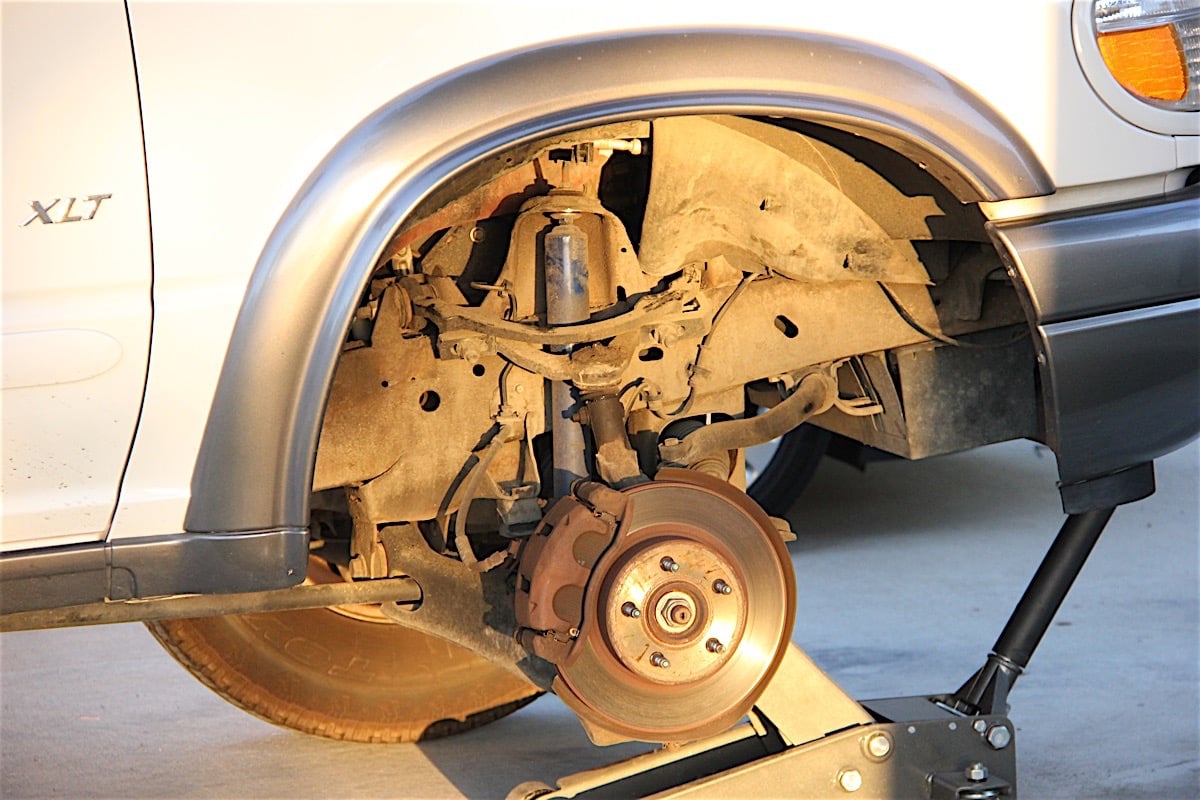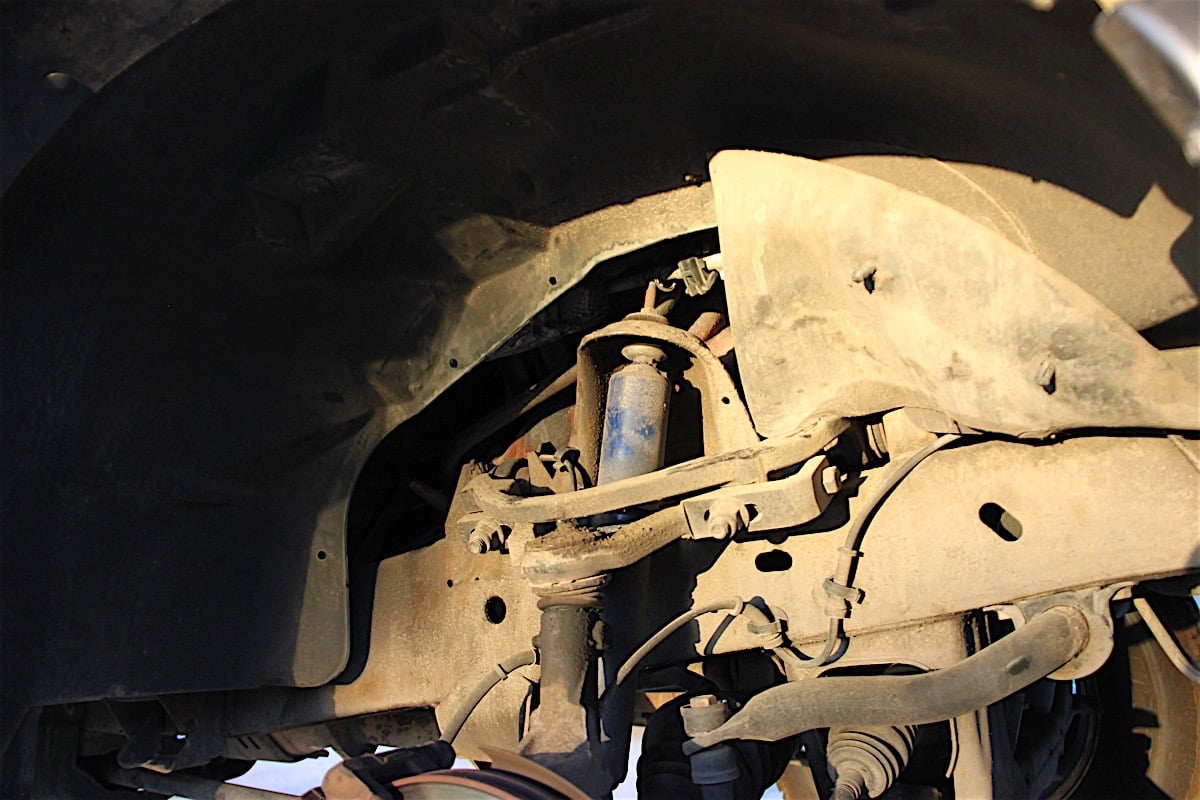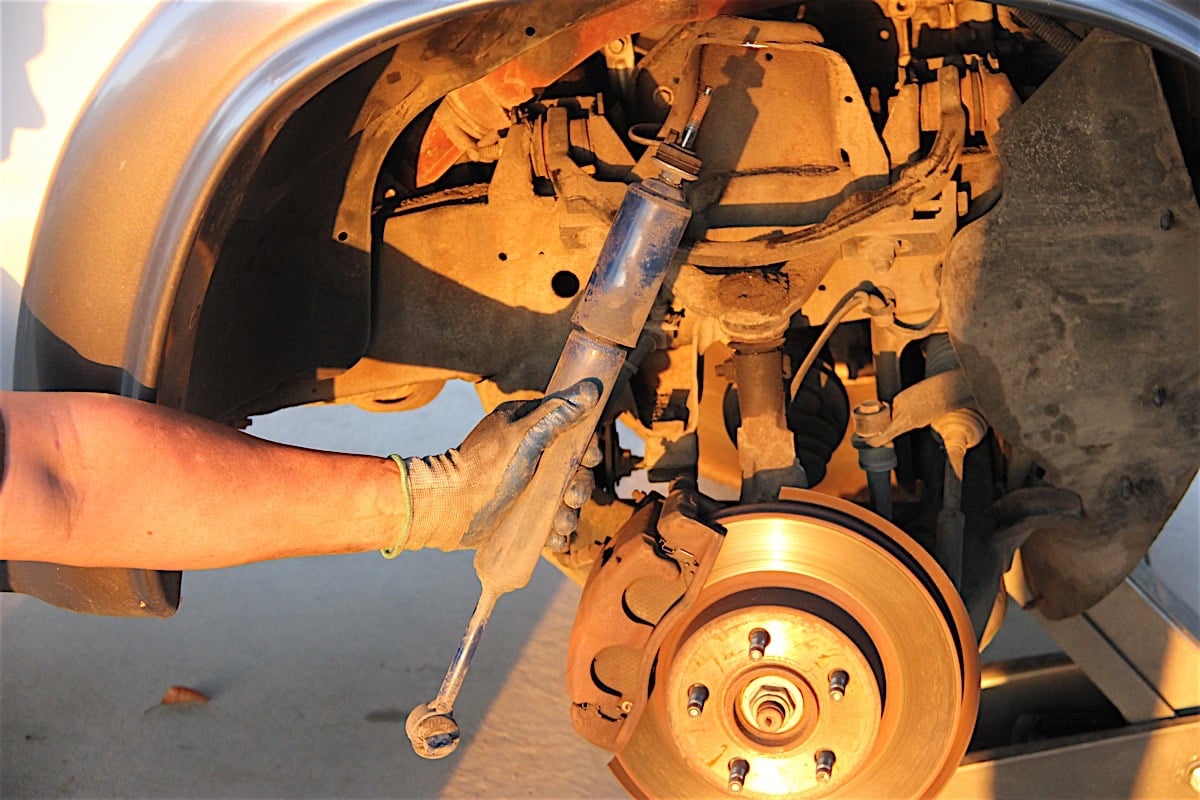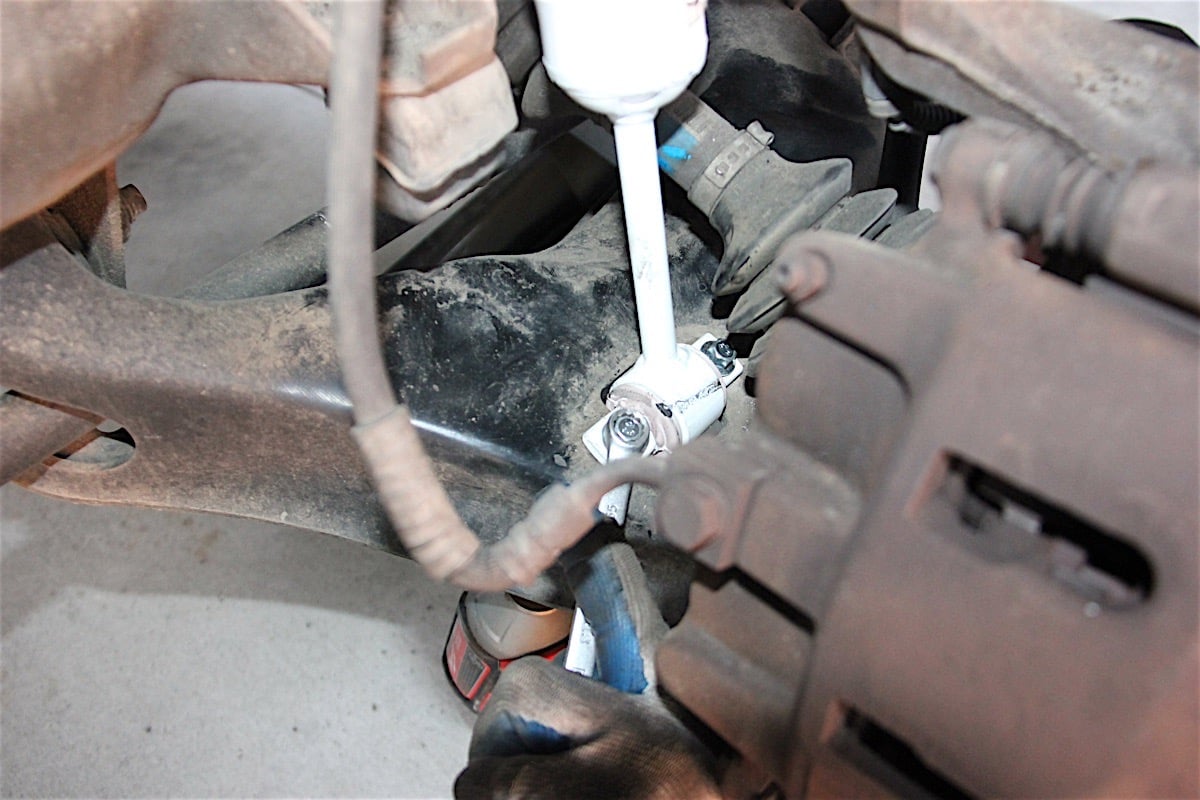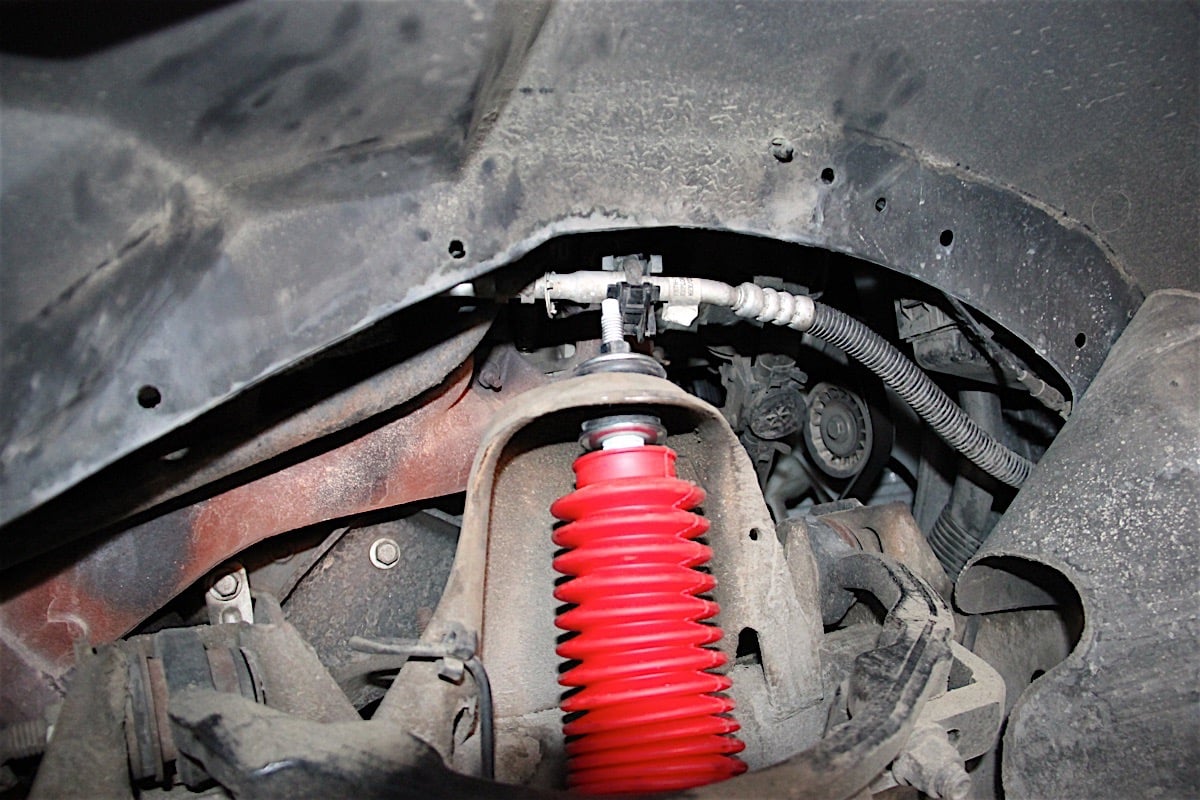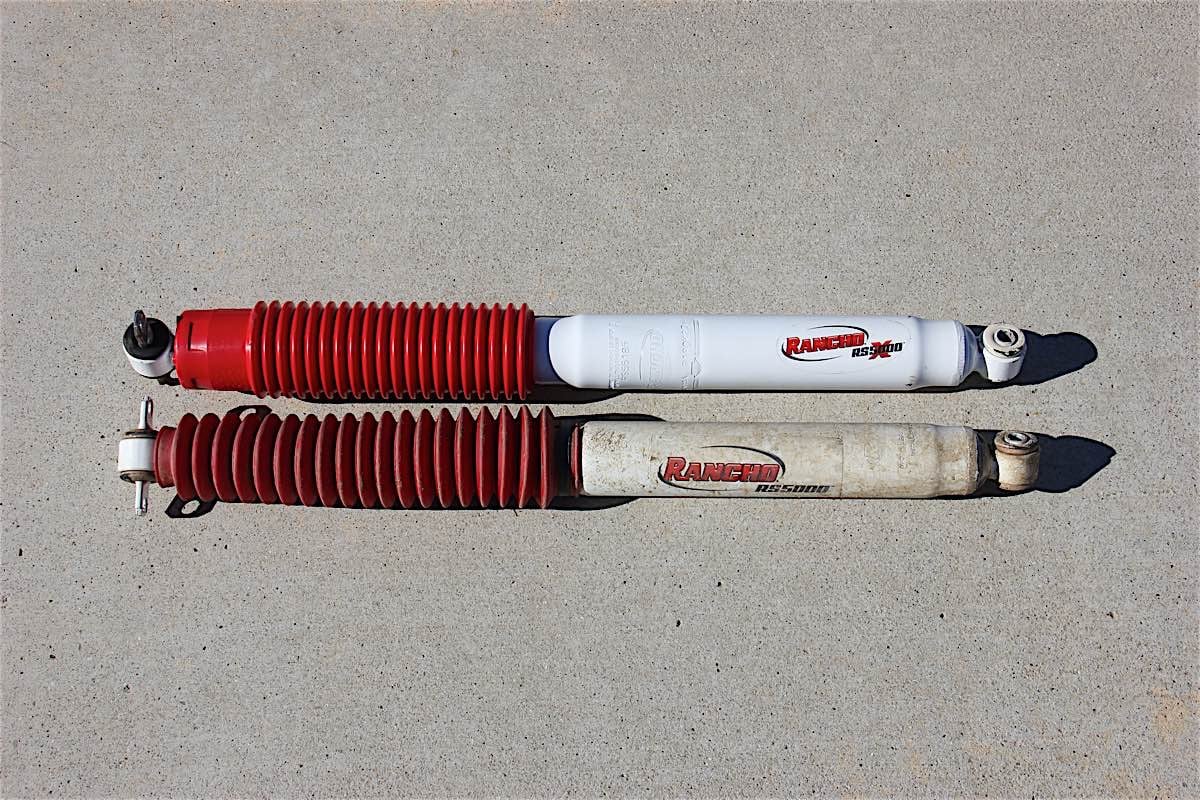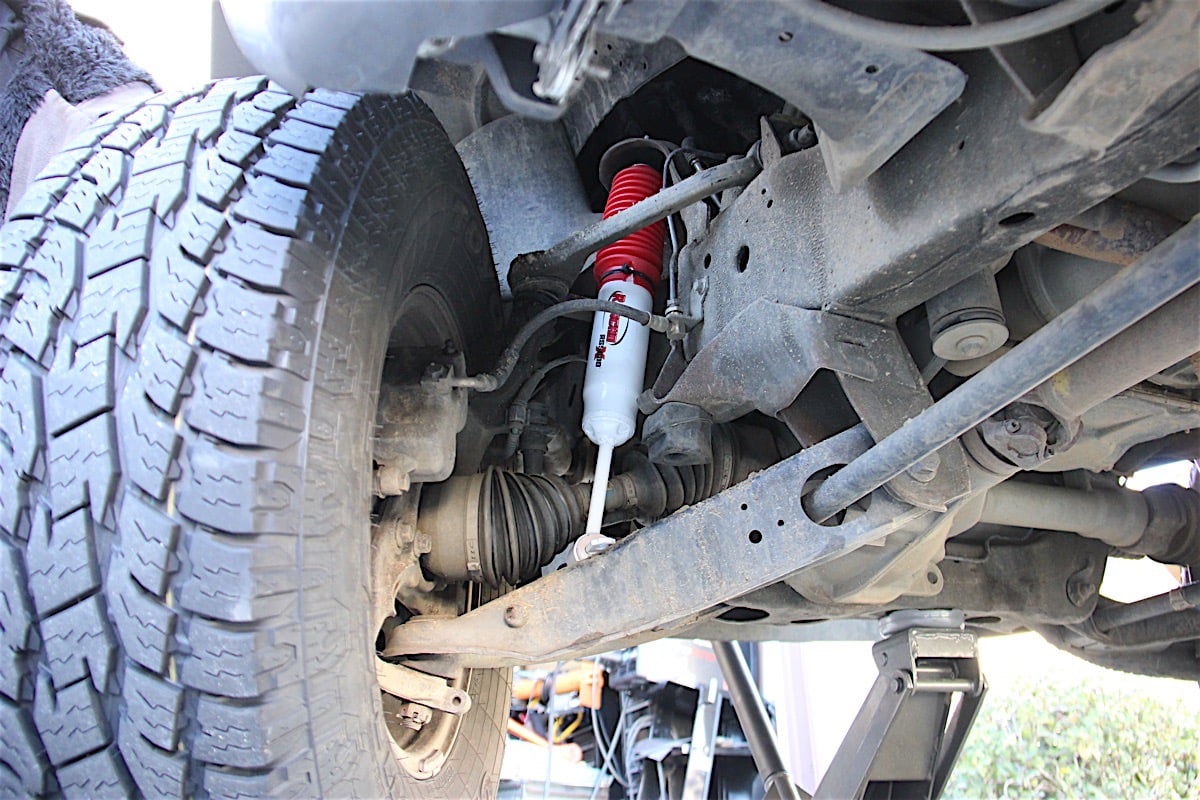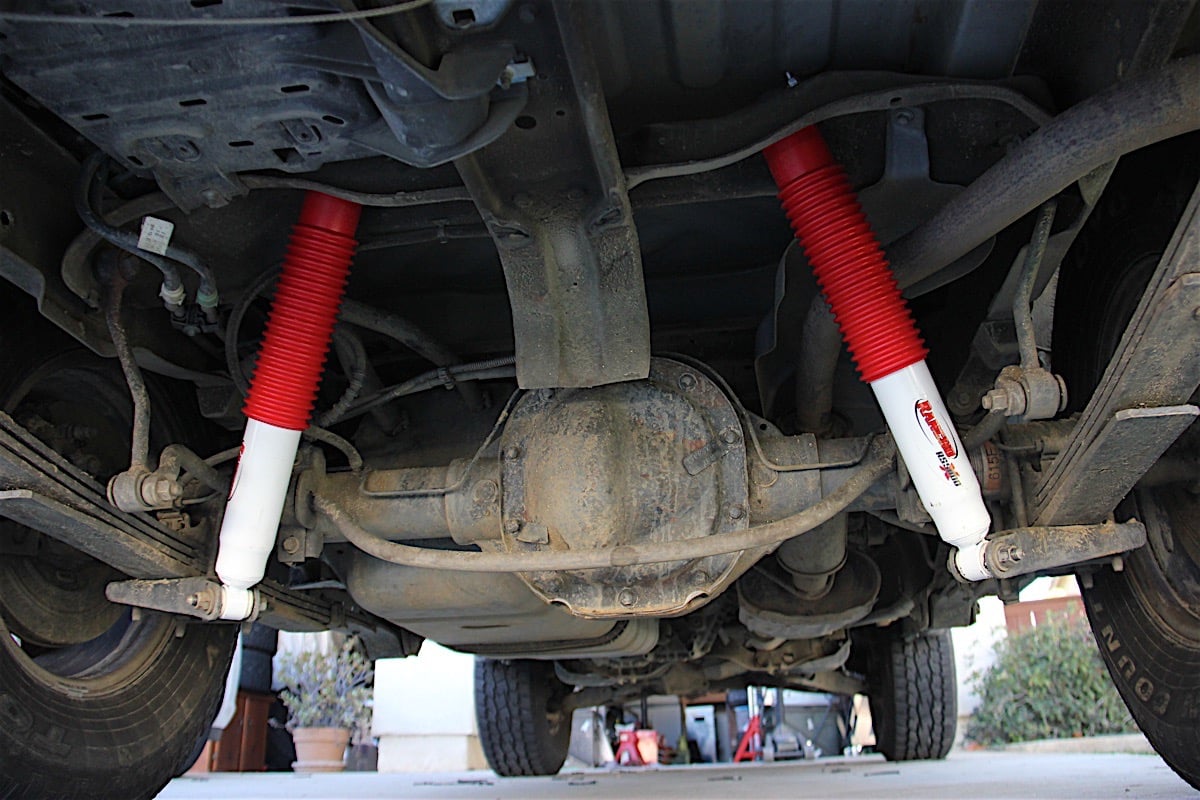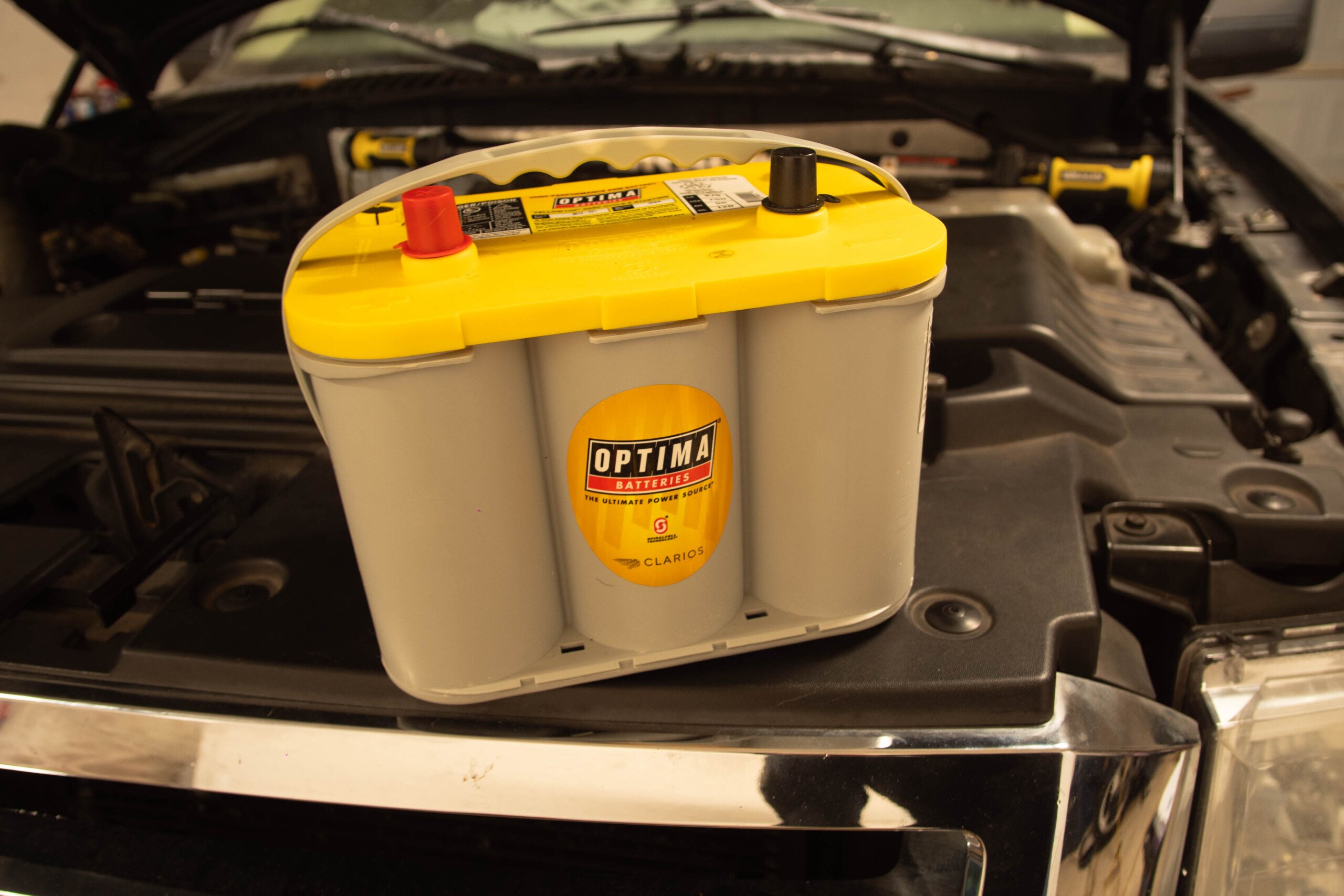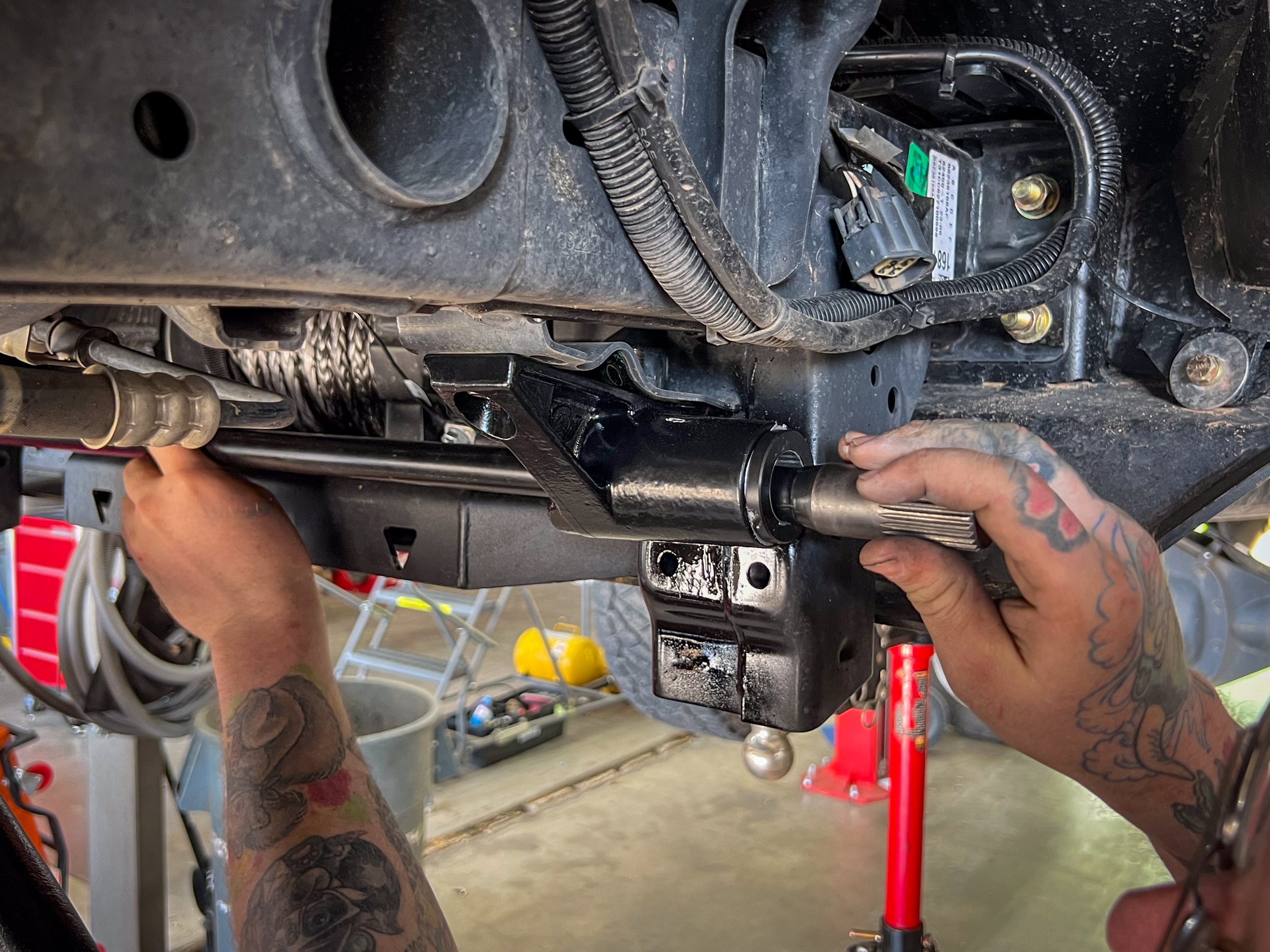In the world of off-road, you can’t get very far if you don’t have the right suspension. Terrain patterns can affect so much of a vehicle’s operations that it’s no wonder that suspension is on the forefront of every vehicle designed to go off-road. In the case of yours truly, a 2001 Ford Explorer (with nothing but a new set of all-terrain tires) is the vessel of choice to go, well, exploring; and its 15-year-old shock absorbers were showing their age. Suffice it to say, it was high time for replacements.
That’s where Rancho Suspension came in. With decades of experience in researching, developing, and manufacturing shocks and other truck essentials, the company has earned its keep as one of the renowned names when it comes to off-road suspension.
From talking with Rancho, we were excited to hear that not only would we be able to install and test a set of their famous RS5000 shocks, but we would also be able to compare it with the heir to the throne: the RS5000X. But could anything top the RS5000’s popularity and trusted name? We set out to determine the answer, but not before talking with Tenneco’s (Rancho’s parent company) Chris Gauss to learn some more about the company, the shocks, and what to expect from both the RS5000 and RS5000X.
Rancho And Its History In Off-Road
It was 1955 when Clarence Shook cut the ribbon on his new business. Back then, he was focused on Jeeps, which were being purchased by World War II veterans now experiencing a golden age of economic freedom and flourishing.

In the late 1980s, Rancho had established itself as a key player in the suspension market. This historical image shows the company’s catalog from 1988. Photo: Rancho Suspension
“Clarence eventually named his company Rancho, and got more involved in suspension and shock absorbers,” said Gauss. “In 1991, the brand was purchased by Tenneco, and we’ve had it ever since.”
In between that time, however, was when Rancho made its mark on the off-road world. It was following the 1970s and early 1980s that truck owners started to customize and modify their vehicles to better suit off-road exploration, and Rancho picked up on this trend. “Once leaf-spring suspension was moved out of the equation, independent front suspension took over, and Rancho came out with a one-piece subframe to give customers a complete package,” said Gauss.
It was in 1985 that the RS5000 debuted, and quickly became a popular choice for truck owners seeking on-road comfort and off-road prowess. “It was recognized around the globe as the shock absorber to have for off-road use,” commented Gauss. Over time, more players came into the market and things have changed. The RS5000 still operates very well, but technology has really advanced. That’s why Rancho wanted to tune the shock absorber to a new level.”
The Next Chapter
Changing the RS5000 to better suit the trucks and SUVs of today was what led to the development of the RS5000X, which rolled out in 2015. Thanks to the handy sheet below, you can see for yourself how the shock improves upon its predecessor.
Going into more detail, one of the big changes was the widening of the shock body. Where the original was 35mm (or 1.38 inches) in diameter, the RS5000X has almost doubled that to allow for more shock oil to be added – 2.25 inches.
Cross-Tuned Technology
Cross-Tuned Technology is the method Rancho uses to tune its shock absorbers. It refers to the use of the piston and the base valve in conjunction to tune the shock absorber. This adjusts the flow rate of the shock oil from the pressure tube to the reserve tube, allowing fluid to move where it needs to in order to absorb a bump. The result is a shock absorber that strikes a balance between soft and stiff, making the Rancho 5000X “a positive experience for the consumer,” according to Rancho’s Chris Gauss.
Additionally, the 10-stage velocity sensitive damping in the RS5000 gave way to progressive engagement valving. This allowed for more refined and smoother up-and-down (compression and rebound) cycling. Part of this is thanks to Cross-Tuned Technology, which uses the base valve and shock piston together to create better pathways for oil to travel throughout the shock. What’s more, it features a nitrogen gas charge that was missing in the RS5000, and aims to mitigate cavitation of the oil by keeping it pressurized at all times.
Now, it was time to install these both sets of shocks and see just how well the results bore out.
RS5000: A Definite Improvement Over Stock
This particular Explorer is not one that is treated like a princess. It spends most of its time out in the open, whether driving through town or out mobbing through Ocotillo Wells. Doing such things on the shocks that were already installed was like watching a favorite movie with a brass band playing in the background – you get the experience, but you don’t get much fun out of it. Time for a change!
We decided to do these installs on a driveway, mainly because it would be a simple task to do. Armed with a two-ton floor jack and some wooden chocks to hold the tires in place while we worked, we went ahead and mounted the RS5000s.
The stock front shocks came out with the removal of three bolts: one on top, and two on bottom.
Editor’s Note: When we installed the RS5000s, we took off the front tires to install the front shocks. We later discovered we could simply turn the wheels left or right, depending on the side we were working on. We used this method when installing the RS5000Xs.
On a torsion-bar-equipped vehicle like the Explorer, an install like this is lickety-split. First, we took off the tire, and then located the bolts holding in the shock absorber – two on the bottom connected to the control arm, and one on the top. Using a socket wrench, we removed the bottom bolts first, and then held the shaft with a wrench while the socket wrench went to work on the top bolt. These shocks were gas-charged, so we had to compress the shock and slide it out to remove it completely.
The front shocks have been mounted. Torque specs are 30-40 ft-lbs. for the top bolt, and 15-21 ft-lbs. for the bottom bolts.
The rear shocks required us to drop the spare tire and slide it out of the way. With it gone, we saw there were two bolts on top and one bolt on the bottom. We used an impact gun and wrench where possible to make the job go faster.
The RS5000s went in easily and were torqued to their proper specs. A quick test drive assured us that the shocks were firmly installed; now it was time to give them a real test.
For a period of several weeks, the RS5000s proved themselves to be competent replacements for the stock shocks. Any slight potholes or dips in the road didn’t give way to bucking, but rather smoothed out quickly and restored ride comfort almost immediately. Any time we looked to see if the shocks had taken too harsh of a hit, we got out and took a look. Each time, we were glad to see the RS5000s were still in one piece and continuing to do their job.

An off-road outing in the Explorer gave the RS5000s plenty of opportunities to get a work-out. As expected, they did a good job of taking jolts and keeping the SUV stable.
Off-road, the RS5000s had their fair share of prowess as well. We went to Ocotillo Wells for a desert run and rockcrawl session, and never once did the RS5000s give any indication of wearing out or reaching the breaking point. We could take a washboard section and run over a frisbee-sized rock and keep right on going.
In conclusion, the RS5000s delivered on driveability and off-road capability. These were more than suitable for a set already on its way out the door, and took on harsh treatment with ease.
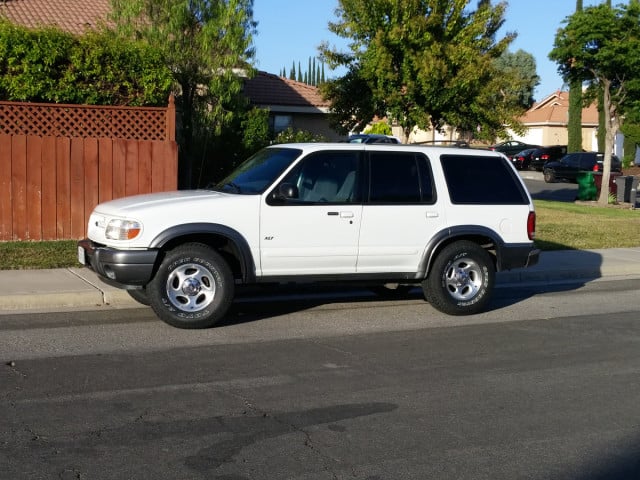
Driving through an intersection and hitting a dip sent the car into an up-and-down routine for a few seconds before settling; the telltale sign of worn-out shock absorbers. On that point, the RS5000s proved themselves to be a great solution.
RS5000X: Taking Things Up A Notch
Armed with gas pressurization and Cross-Tuned Technology, we expected some great things from the RS5000X. We’re happy to report that the RS5000X did deliver on competent on-road and off-road manners, and didn’t do much to change the successful formula established by the RS5000.
To us, the sensation of driving with the RS5000X versus driving with the RS5000 was about the same – smooth and quick to readjust after jolts, and strong enough to keep going. The shocks have been installed on the Explorer since December 3rd and haven’t shown any negative signs.
The RS5000 and RS5000X appear the same to the untrained eye, but the internals are at different levels. Note: the shocks on the left are compressed, and the shocks on the right are uncompressed.
On-road, the RS5000Xs maintain the good manners of their predecessor, giving confidence to the driver when approaching unpaved areas or pothole-ridden sections. Off-road, they are great for dealing with small rocks and washboard sections. In some of the fire trail and off-beat sections of Temecula, where rain has recently created ruts and ravines, the RS5000Xs perform as expected – nowhere near the level of bypassed and coilovered shock absorber cousins, but still adequate to deal with obstacles without bucking the passengers around too much.
And while we have yet to return to Ocotillo Wells to see if these shocks can stand up to rockcrawling, we feel we can say that they would perform admirably if given the task. Given their ability to follow through on what made the RS5000s great, the RS5000Xs seem poised to continue the Rancho legacy for many years to come.
The RS5000Xs took what made the RS5000s great and kept the formula going. For on-road and light off-road use at an affordable price point, these were a fitting choice for the Explorer.
In their own ways, both the RS5000 and RS5000X have something great to offer the off-road enthusiast who wants decent on-road and off-road handling traits. The sun is setting on the RS5000, but the RS5000X can ably and confidently carry the torch for years to come. To find out more, visit Rancho Suspension on its website.






